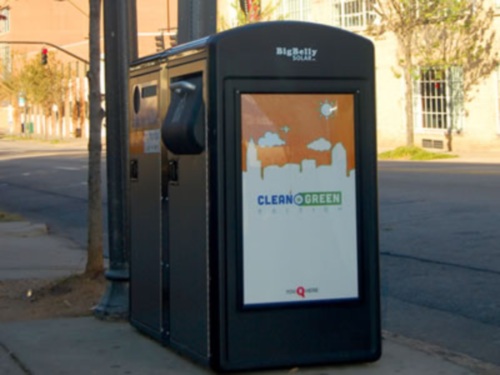The City of Raleigh has seen a major reduction in costs for trash collection since they’ve begun placing smart garbage cans – referred to as “Big Belly cans” – throughout the City’s downtown area.

The City of Raleigh has seen a significant reduction in the City’s costs thanks to the implementation of modern-day trash collection services like Big Belly cans.
A grant from the U.S. Department of Energy provided the funds necessary to purchase about 40 of these cans (they cost $7,000 to manufacture).
As the start of the program, the City replaced 32 traditional open-top cans along Fayetteville Street with 10 Big Belly stations. The reduced costs of trash collection seen during the year since initial implementation: $40,903 to $1,607.
In the Glenwood South part alone, trash collection costs have been reduced from an annual rate of $12,056 to just $115.
So what makes these cans so financially efficient? They’re large. They’re solar-powered. And they compact trash and recyclables on the spot — reaching a maximum capacity of 150 gallons, at which point they send an email to City workers letting them know that they need to be emptied. This feature alone saves the city a ton of money, because it saves the City from sending workers on constant rounds around town.
It also means no overflow.
“The Big Belly units have helped the City save money and made Downtown much neater by eliminating a lot of wind-blown trash from the open-top cans,” said City of Raleigh Solid Waste Services Assistant Director Phillip White. “You can’t ask for much more than that.”
The Big Belly trash cans are impressive from a tech-spec standpoint too. They have a maximum compaction force of 1,250lbs and a cycle time for compaction of just 41 seconds, during which users can still deposit trash (there’s no lock-out period).
A fully automated, IC processor controlled system is in charge of monitoring trash level, fullness, and the machine’s status. Three-color LED status lamps indicate compacted trash level, error codes, as well as the machine’s status. A GPRS wireless data radio allows for remote, online monitoring and management of the system.
As for power, Big Belly draws 30 watts from a polycrystalline silicone cell PV module. The PV panel is protected from damage by a polycarbonate bubble. The system’s voltage runs 12 volts DC, maintained by a pulse width modulator, and stores extra energy in a spill-roof, maintenance-free, sealed-off 12V battery. The entire unit is cordless and totally self-powered, with no additional wiring required.
To learn more about the cans, head to bigbelly.com
Story via: raleighnc.gov
Advertisement
Learn more about Electronic Products Magazine





